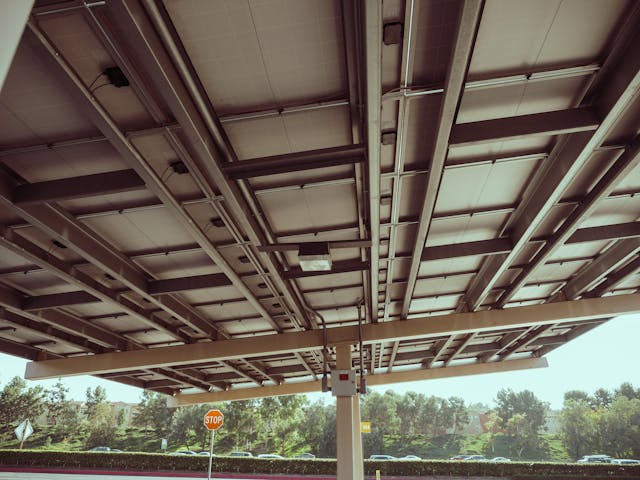What is Metal roofing?
In most cases, metal roofing can be a viable option for most homes, with some exceptions such as very flat roofs. It is now possible to find metal roofing products that resemble asphalt shingles almost indistinguishably from traditional asphalt shingles. Continue reading to learn more about metal roofing cost per square foot and its pros and cons.
Metal roofing cost per square foot
The variables associated with metal roofs are almost as numerous as the metal options, making it difficult to prepare a budget. In preparation for re-roofing, access will be created, the existing roof covering will be removed, damaged structural elements will be repaired, and the metal roof will be installed. It is important to note that a significant amount of the final price will depend on the choice of installer. Depending on the level of service you seek, installation costs can vary from free to more than $15 per square foot.
In addition to complying with all applicable laws, purchasing equipment and training employees, and making sure they have enough to cover their costs during and after the project, a full-service contractor has to make enough money to justify their risks. Despite the fact that it isn’t rocket science, it isn’t an easily accessible business if you plan on staying for a while.
The devil is in the details! When it comes to installing a new roof, it can be a bit of a gamble if you aren’t familiar with the intricacies of such work; but as the old saying goes, “the devil is in the details!”. Installation labor for a simple roof typically costs between $1 and $2 per square foot. Full-service contractor installing a walkable pitch residential roof, $2-$5 per square foot. Up to $10 per square foot for installing a steep, intricate roof.
Pros of metal roofing
· Affordability
Most roofs and home designs can be customized with metal roofs. Many products are available that look like wood shakes, slates, or tiles, and even those well suited to rounded or arched roofs.
· A lightweight
It is crucial for structures in seismic-prone regions to have low-weight roofs to prevent structural movement and damage as they age. Residential metal roofs are the lightest roofs available. As well as installing a metal roof over existing shingles, metal roofs can eliminate the need to dispose of them in landfills.
Read more:How Long Does A Tankless Water Heater Last? Tankless Water Heater Working Along With Pros And Cons
· Resistance to fire
In addition to providing lasting protection against fires outside, metal roofs provide durability against airborne sparks and embers.
· Aesthetics
An attractive and durable metal roof makes a home stand out. From the moment of installation, other roofing materials deteriorate, affecting their appearance over time. On the other hand, metal roofing can maintain its “new roof” appearance for many years.
· Resolving problems
When it comes to flashings, dead valleys, and transitions, many roofing materials rely on sealants that are prone to failure. In contrast, metal roofing allows those areas to be flashed with matching metal – a longer-lasting and more reliable option than sealants and adhesives.
· Using recycled content
Depending on your chosen product, you can expect a quality metal roof to contain 35% – 95% recycled content. The metal roof should also be 100% recyclable instead of being disposed of in a landfill at the end of its useful life.
· The addition of a home
It can be challenging to match older roofing materials in a newly added or modified house because of frequent color and style changes. Fortunately, most metal roofing manufacturers have various colors and designs, so homeowners can add to their roofs anytime.
Cons of metal roofing
· Inconsistency in quality
Metal roofs are long-term investments, so choosing a roofer who offers a quality system and has the experience and dedication to install them correctly is essential. Some companies use too thin metal sheets to cut costs.
· Investing more
Most homeowners who choose metal roofs consider themselves in their “forever homes,” making it easier for them to justify higher costs for a higher quality roof. A variety of factors can influence the ultimate payback, including energy savings.
· Taking longer and costing more to install
Compared to metal roofs, metal roofs are typically more expensive. It’s possible, however, that the gap will not be as large as you think. In contrast with standard shingles that rely heavily on sealants and mastics, metal roofs are flashed to fit your roof configuration so that installation can take longer.
· A walkable area
Metal roofs are the best for hail resistance and walkability because they maintain their impact resistance with age. It is common for other roofing materials to soften and become brittle as they age, which makes them more prone to damage.
It is possible to walk on metal roofs, and manufacturers will provide instructions on how to do so. The heavily formed metal roofs are the most easily walked on and can also provide the best protection.
The life span of metal roofing
A metal roof is unlikely to last as long as most homeowners live different sources, it will last between 40 and 70 years, compared to 12 to 20 years. Some metal roofs can withstand winds of 140 mph, depending on the model. In recent years, steel roofs have become more popular among homeowners due to their durability.
In a state with harsh winters and sometimes deadly summers, it’s not uncommon to find 100-year-old metal roofs on historic homes. “It’s a roof that lasts for a lifetime.”
Conclusion
According to the kind of metal roofing used, the price to build a metal roof in 2022 might range from $3.10 to $29.65 per sq foot. While more expensive metals like copper & tin can cost up to $30 per square foot, more affordable metal roofing materials like aluminum can cost as little as $3 per sq foot.





